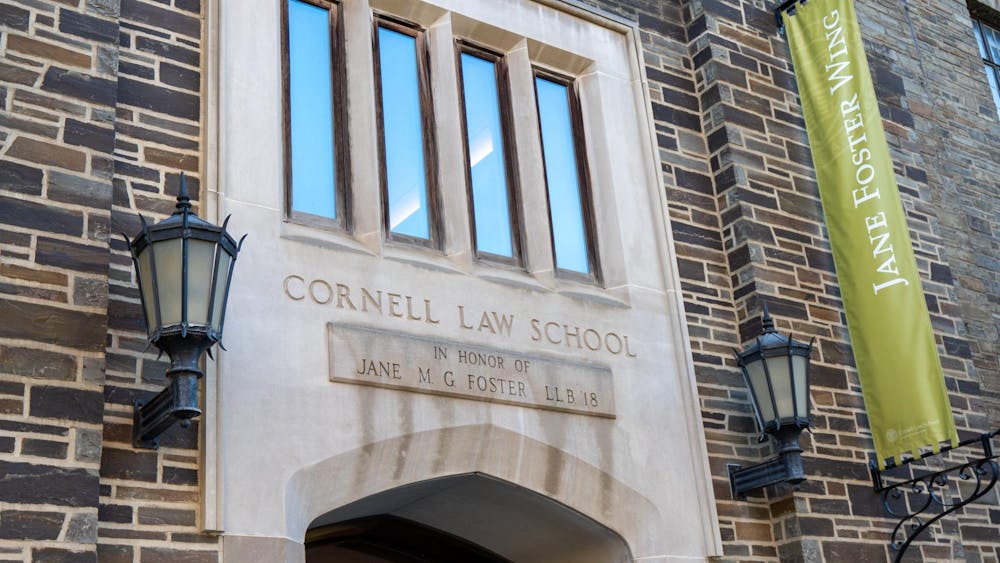The landscape of college athletics is shifting. Since the NCAA’s landmark policy change in 2021 allowing student-athletes to profit from their name, image and likeness — commonly referred to as NIL — deals, college sports have become increasingly commercialized, blurring the line between amateurism and professional sports. With record-breaking viewership, multimillion dollar sponsorships and a surge of public interest in athletes like Caitlin Clark and Paige Bueckers — and for women’s sports overall — it felt like equity was finally within reach.
But now the ground is shifting again.
The Trump administration has intervened by rescinding Title IX-based federal guidance that had ensured NIL compensation was distributed equitably across men’s and women’s sports.
The House v. National Collegiate Athletics Association lawsuit could redefine how universities compensate athletes. If a school opts into the proposed settlement, it would not only be permitted but required to pay athletes directly for the use of their NIL. These universities could receive up to a $20.5 million annual cap to distribute amongst its athletic roster. The budget is expected to be at roughly $33 million by the end of the ten-year plan.
This sounds like progress — until you look closer.
While the Biden administration had issued guidance — which has now been removed from the website — for these schools on how to distribute this cap based on Title IX regulations, to ensure the compensation was distributed fairly between men’s and women’s teams, the Trump administration issued a statement revoking this guidance in February. Biden’s NIL guidance was “profoundly unfair” and “overly burdensome,” claimed Acting Assistant Secretary for Civil Rights Craig Trainor. According to him, ensuring equal pay and treatment to female athletes is not a necessary step to protect these teams. In reality, Title IX guidance has been crucial for the expansion of female athletics over the past 50 years.
This isn’t just administrative fine print. This is a blatant attack on women’s athletics — a huge red flag that athletics programs across the country must recognize.
How can it be considered “unfair” to ensure that female athletes are compensated equally to male athletes? These athletes train just as hard, represent their schools just as proudly and compete at the highest levels of collegiate play. Yet, without proportional funding, these women’s teams are at risk of diminishing — or disappearing altogether.
The question is no longer theoretical. We’ve already seen institutions like University of Missouri–St. Louis, Cleveland State University and San Francisco State University have slashed their number of NCAA competing teams amid budget issues. With no federal guidance, what stops athletic departments from directing most NIL funds to marquee men’s teams while smaller or women’s teams struggle to survive?
Universities must rise to this moment — not just to preserve fairness, but to champion it. If the federal government won’t mandate equity, then our schools have the responsibility to choose it. And they can. Without strict Title IX enforcement, institutions could even redistribute more NIL money to women’s teams, correcting long-standing imbalances.
This is not about identical budgets. This is about equity, ensuring athletes receive what they need — no, what they deserve — based on decades of contributions, challenges and histories of underinvestment.
While the Ivy League has opted out of the House settlement, it too needs to take the steps to protect its women’s athletics program which has grossed strong success for the Ancient Eight. At Cornell, the women’s hockey team was ranked third in the country, the women’s lacrosse team sits at 25th in the nation now and the women’s squash team finished at No. 8. These programs — along with the 14 other women’s sports offered at Cornell — need to be protected and deserve to receive proportional funding.
Cornell has long prided itself on being a trailblazer — one of first universities to allow women to attend, one of the first to preach equality in education. If that legacy means anything today, it must show in action. It’s not enough to point to our past. We must set a new standard — one for Ithaca, one for the Ivy League and most importantly, one of institutions nationwide to protect its female athletes.
Ithaca College, which has still not decided on if it will opt in or out of the agreement, is just two miles away from Cornell and will be watching what this institution of higher learning will do — just as hundreds of universities will around the country.
Zeinab Faraj is a first-year in the College of Arts and Science studying Biology and Society. She is the 143rd Assistant Sports Editor and a sports enthusiast. She can be reached at zfaraj@cornellsun.com.
The Cornell Daily Sun is interested in publishing a broad and diverse set of content from the Cornell and greater Ithaca community. We want to hear what you have to say about this topic or any of our pieces. Here are some guidelines on how to submit. And here’s our email: associate-editor@cornellsun.com.
Zeinab Faraj is a member of the class of 2028 in the College of Arts and Sciences. She is the features editor on the 143rd Editorial Board and was the assistant sports editor of the 143rd Editorial Board. You can reach her at zfaraj@cornellsun.com.











